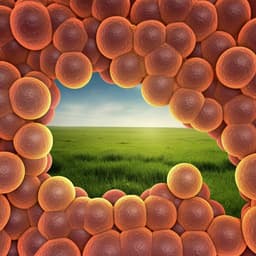
Chemistry
Reusable and effective polyacrylic membranes for mecoprop and bentazon extractions
G. Utzeri, J. C. Guirado-moreno, et al.
This study introduces innovative reusable polyacrylic membranes designed for efficient pesticide extraction, achieving remarkable removal efficiencies for mecoprop and bentazon. Developed by a team of researchers including Gianluca Utzeri, José Carlos Guirado-Moreno, and Tânia F. G. G. Cova, these environmentally friendly membranes can be reused for at least 4 cycles while showcasing exceptional performance and compatibility.
Playback language: English
Related Publications
Explore these studies to deepen your understanding of the subject.







